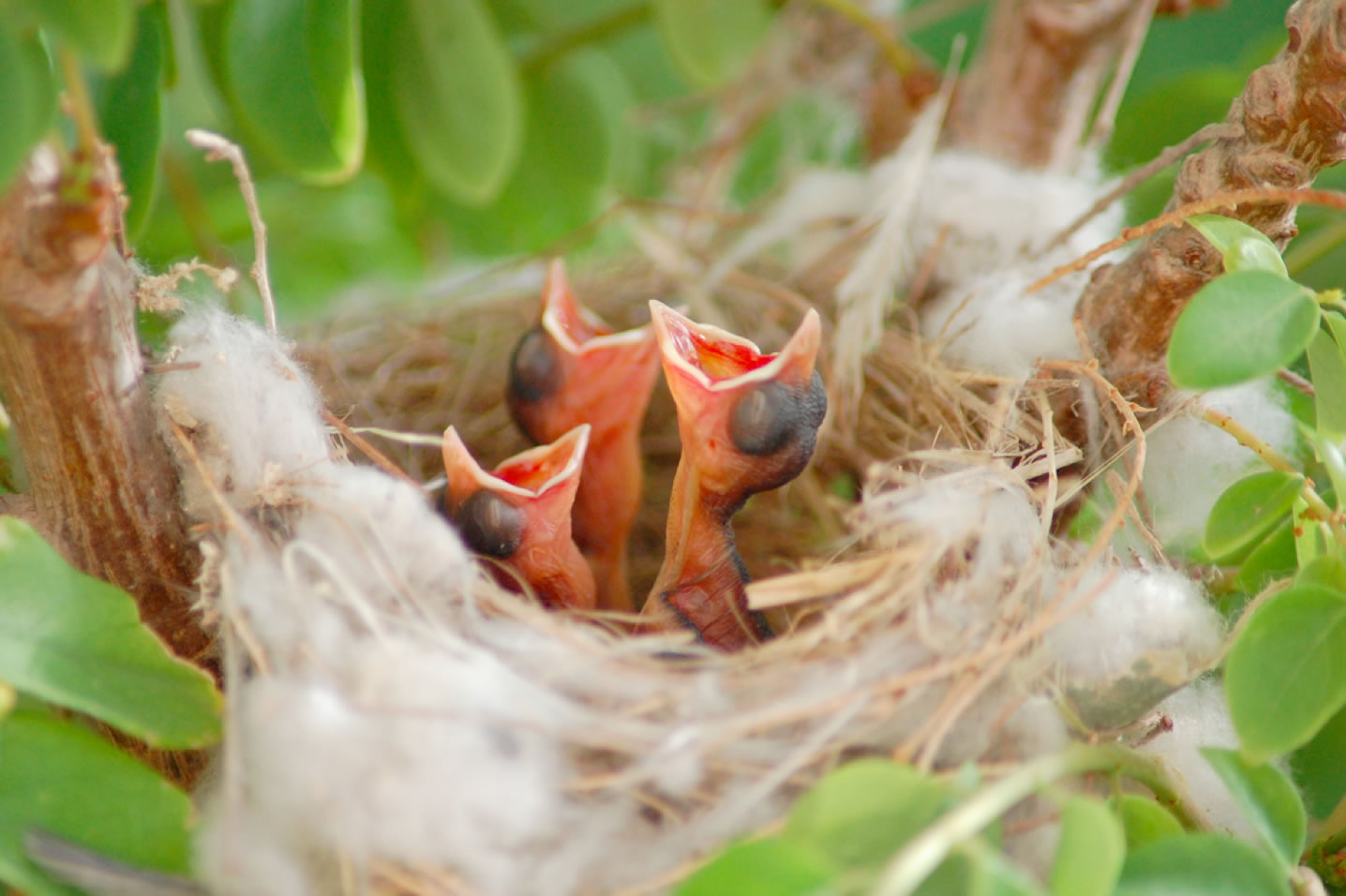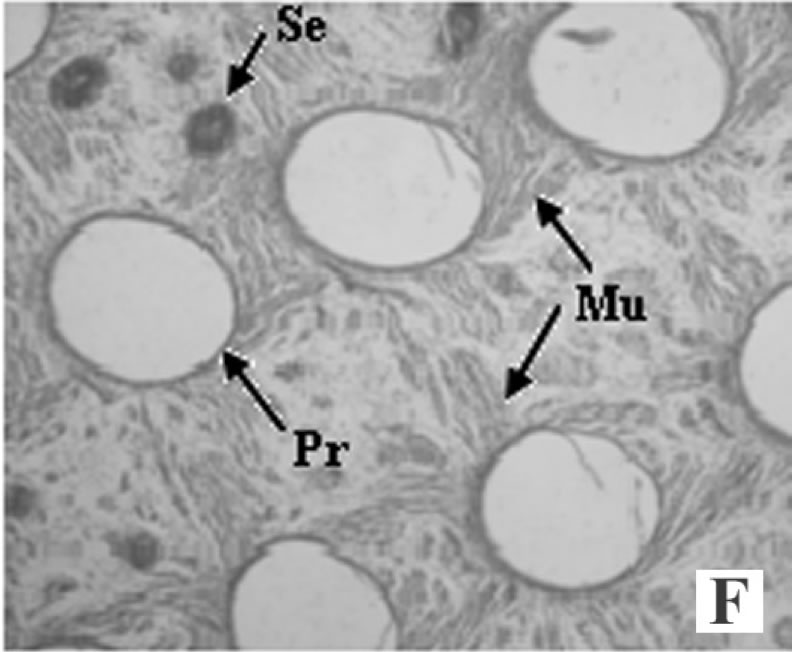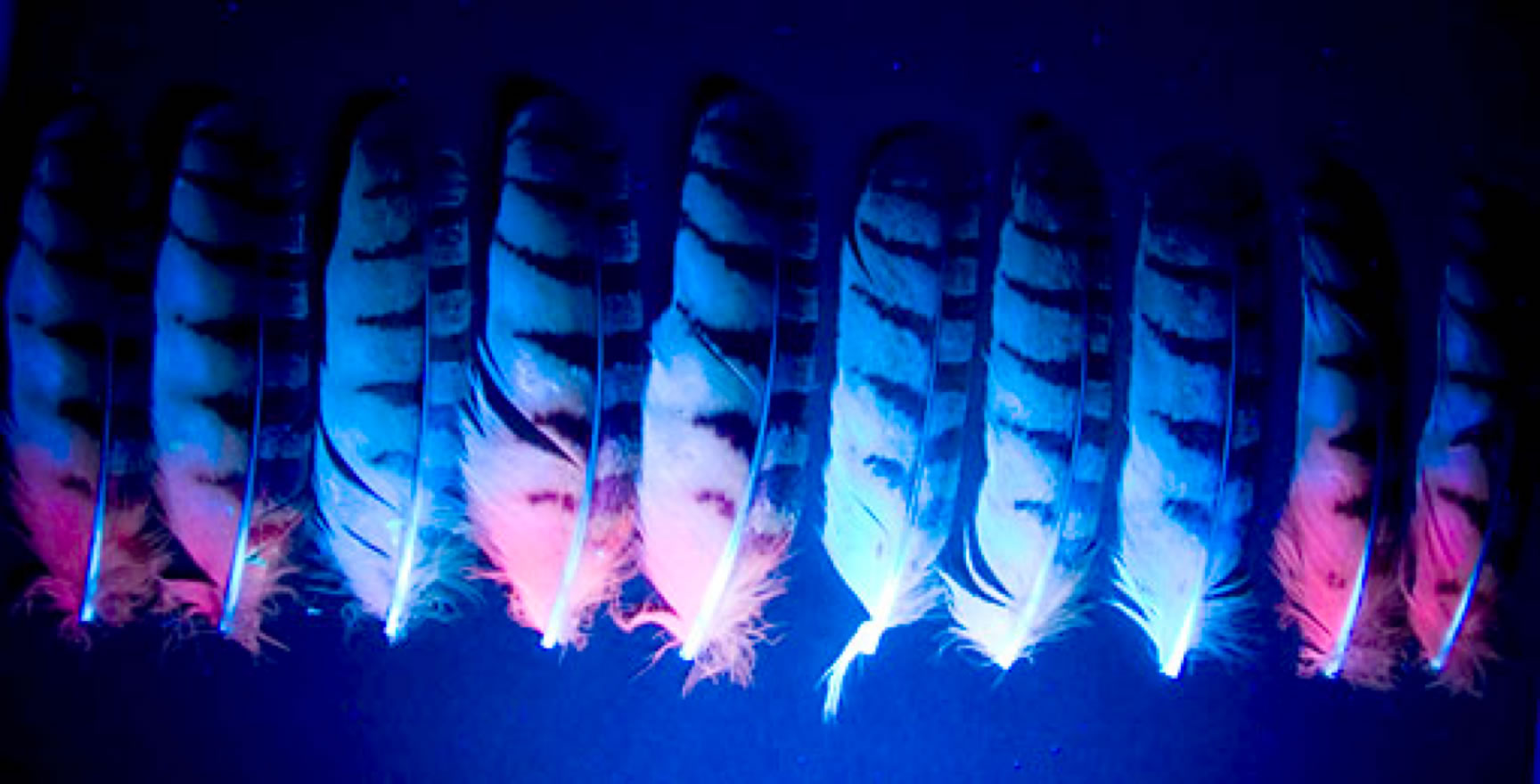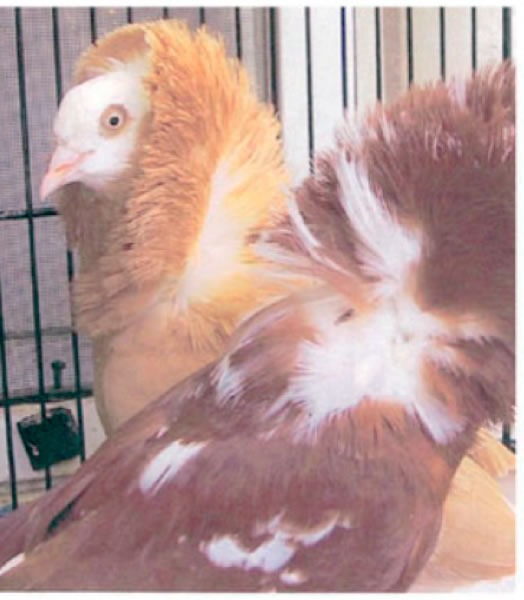UV Plumage and Female Mate Choice
Biology 342 Fall 2010 Rachel Baden
Ontogeny
Feather Growth and Development
Some species of birds, such as chickens or quail, develop feathers while the offspring are still inside the egg, so that the chicks hatch fully feathered and able to self-regulate their body temperature. Others, like owls and most songbirds, are born naked with closed eyes, and require parental care while they grow their own plumage. Both types of birds, however, show the same patterning in the number of times they grow feathers: one round of juvenile plumage in the egg or after hatching, and then adult plumage repeatedly throughout their lifetime, in some cases regularly at the same time each year, and in others in a different pattern.

Altricial chicks, hatched without feathers and with unopened eyes.
Beginnings of Growth
Feather growth begins with the formation of “feather tracts,” areas of the skin predetermined for plumage. The pattern of feather tracts on the skin is macropatterning, while the arrangement of feathers within a tract is called micropatterning. Interestingly, individual feathers are organized in a hexagonal pattern, though they seem to grow in randomly (Widelitz et. al. 2003). Once the distribution of feathers is determined, the skin of the chick or embryo begins to thicken and produce a “bud,” which over time grows bigger and develops more of the structures necessary for a full feather. During this period, muscles, nerves and blood vessels also develop around the growing feather; once the feather is mature, these muscles can angle the feather in various different directions to allow the bird to adequately cover bare skin (if a body feather) or for flight control (if a flight or tail feather) (Xu et. al. 2007).

In this photomicrograph, the big grey circles are developing feather follicles (labeled Pr),
and they are surrounded by a rectangular organization of muscles (labeled Mu).
Maturing Feathers
As the feather continues to develop, it grows barbs before the main shaft, called the rachis, then on the barbs grow the barbules that keep the feather organized. Some feathers never grow a rachis or barbules; such feathers are called down feathers, and they serve mostly to keep the bird warm (Yu et. al. 2002). Down feathers are frequently used in man-made items like pillows and jackets because of their excellent natural insulating qualities.

Owl feathers reflecting UV light. The main shaft, or rachis, is evident, with striped barbs extending from either side.
Near the base of the rachis, the barbs lack barbules and so resemble down feathers.
Aging Feathers
As feathers grow older, their quality often deteriorates, and so therefore do structural colors like UV. Birds molt on a regular basis, meaning they grow new feathers usually once a year, but circumstances at the time of feather growth can affect the quality of the new feathers. If a bird is in poor nutritional condition, the feathers may be less structurally sound and reflect UV light less well (Keyser and Hill 1999).

These pigeons have a mutation that causes their neck feathers to essentially grow in upside-down.